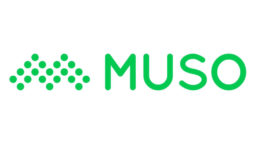The following MBW blog comes from Andy Chatterley, the CEO of MUSO (pictured). UK-based MUSO considers itself the global authority on digital piracy, collecting and monitoring data from billions of content piracy infringers every day. MUSO raised over $3m last summer to drive sales, marketing and technological expansion.
Recognising the piracy audience could open up new revenue streams for the music industry.
It is an incredibly exciting time to be involved in the music business, the opportunities and revenues being generated from streaming services are revolutionising an industry that saw vastly declining revenues over the previous 20 years, and part of that decline was caused by digital piracy.
Talk to some music industry executives about piracy, and they’ll say that services like Spotify and Apple Music took care of that problem – and you’d be forgiven for believing them.
After all, there’s never been a time where music has been more readily available globally, and across a number of different channels, so why would anyone need to pirate music?
Contrary to this opinion, however, are the facts.
Throughout 2017, MUSO tracked over 300 billion visits to piracy sites globally.
Music piracy accounted for 24.6% of these visits – that’s 73.9 billion visits over the course of the year. This demand for unlicensed music online was up 14.7% year-on-year.
Whilst we have seen a move towards unlicensed streaming sites (with over 41% of piracy visits now going to unlicensed streaming platforms) illegal download, torrent and ripper sites still account for 59% of music piracy traffic.
Each visit to a download or torrent site might represent a single track, an album or an entire back catalogue being downloaded – removing recurring streams and revenues from the digital ecosystem.
Piracy is prolific in every country globally, in both established and emerging markets alike. With this in mind, it’s now time to acknowledge the elephant in the room and talk about the opportunities that piracy presents, moving the conversation on from just revolving around the potential threat that piracy may embody.
Whilst we can’t condone piracy and strongly believe it is crucially important for right-holders to remove illegal content online where content can be removed, we also have to change the way we view piracy audiences.
If just half of the people who access pirated content were converted to paying subscribers, the positive fiscal impact on the music industry would be significant and long-lasting.”
The rhetoric criminalising piracy audiences is prolific; often dismissed as irrelevant, or completely unacknowledged. However – and this may initially seem counter-intuitive – we often overlook the huge revenue opportunity that piracy presents. The piracy audience, in fact, usually consists of highly intentional and committed fans, who are willing to go to any lengths to find the content they desire, rather than belligerently picking the pockets of the creative industries.
Given the revenue potential, it is certainly not an audience that should be ignored. If just half of the people who access pirated content were converted to paying subscribers, the positive fiscal impact on the music industry would be significant and long-lasting.
Supplementing legitimate consumption data with piracy data can provide a holistic view of the regional demand for a specific artist or genre of music.
This data, which is often available pre-release and before other data trends are available, can provide significant insight and value into all aspects of an album campaign or general artist audience awareness. For example, being able to show high intent geographical demand from piracy audiences and comparing that to other artists and releases can inform a wide range of promotional and marketing activities from radio, PR, touring, licensing, music synchronisation rights, marketing budgets, distribution etc.
“MUSO’s data points to over a quarter of the connected internet population visiting piracy sites in 2017.”
In many ways, this high intent data is more valuable than playlist data from licensed services which can largely relate to a passive audience that is not engaged with a particular artist included on a popular playlist.
When we acknowledge how vast the global piracy audience is and that it is just as valid, just as likely to buy live tickets, just as likely to buy vinyl box sets and just as likely to subscribe to a digital service if presented with the right proposition, then we are acknowledging that the potential benefits that become available to the music industry through embracing this data are significant.
MUSO’s data points to over a quarter of the connected internet population visiting piracy sites in 2017.
If we can better understand these audiences, their behaviour, and motivation, and drive them back to legal channels, then the future can truly be golden.Music Business Worldwide




